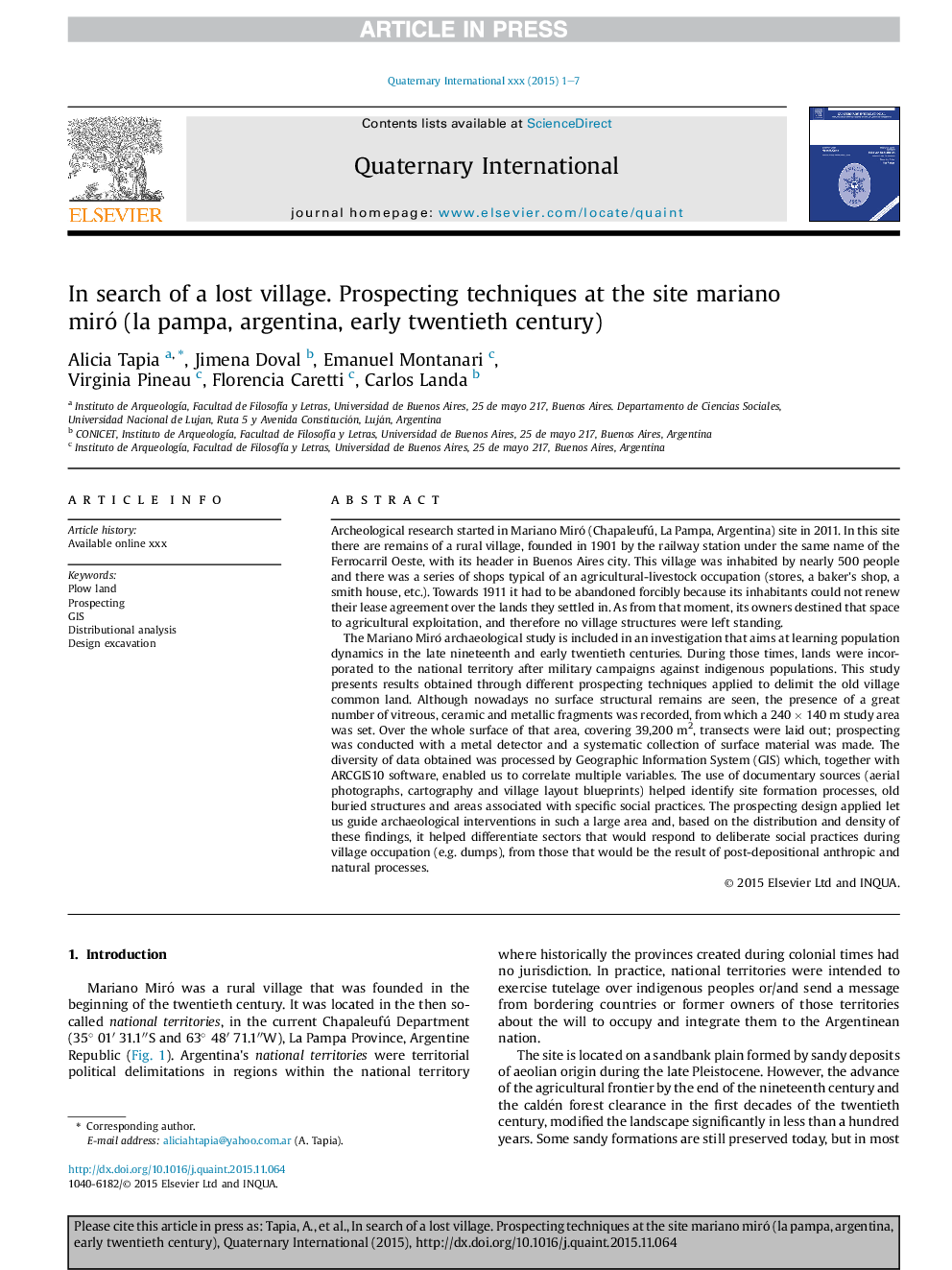| Article ID | Journal | Published Year | Pages | File Type |
|---|---|---|---|---|
| 5113270 | Quaternary International | 2017 | 7 Pages |
Abstract
The Mariano Miró archaeological study is included in an investigation that aims at learning population dynamics in the late nineteenth and early twentieth centuries. During those times, lands were incorporated to the national territory after military campaigns against indigenous populations. This study presents results obtained through different prospecting techniques applied to delimit the old village common land. Although nowadays no surface structural remains are seen, the presence of a great number of vitreous, ceramic and metallic fragments was recorded, from which a 240Â ÃÂ 140Â m study area was set. Over the whole surface of that area, covering 39,200Â m2, transects were laid out; prospecting was conducted with a metal detector and a systematic collection of surface material was made. The diversity of data obtained was processed by Geographic Information System (GIS) which, together with ARCGIS10 software, enabled us to correlate multiple variables. The use of documentary sources (aerial photographs, cartography and village layout blueprints) helped identify site formation processes, old buried structures and areas associated with specific social practices. The prospecting design applied let us guide archaeological interventions in such a large area and, based on the distribution and density of these findings, it helped differentiate sectors that would respond to deliberate social practices during village occupation (e.g. dumps), from those that would be the result of post-depositional anthropic and natural processes.
Related Topics
Physical Sciences and Engineering
Earth and Planetary Sciences
Geology
Authors
Alicia Tapia, Jimena Doval, Emanuel Montanari, Virginia Pineau, Florencia Caretti, Carlos Landa,
